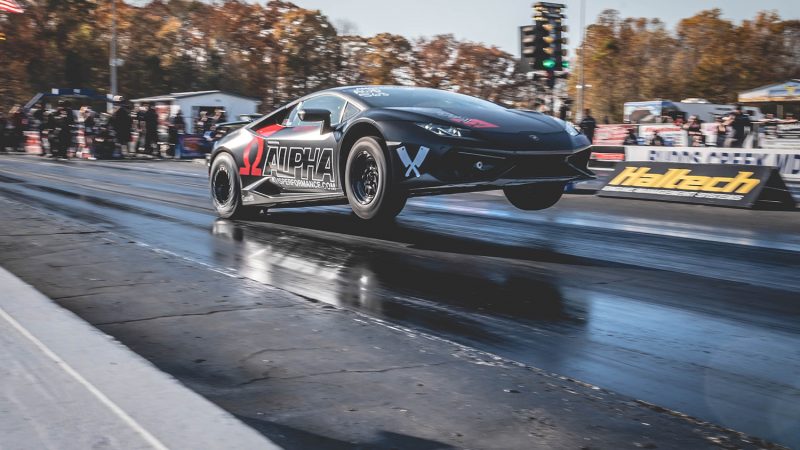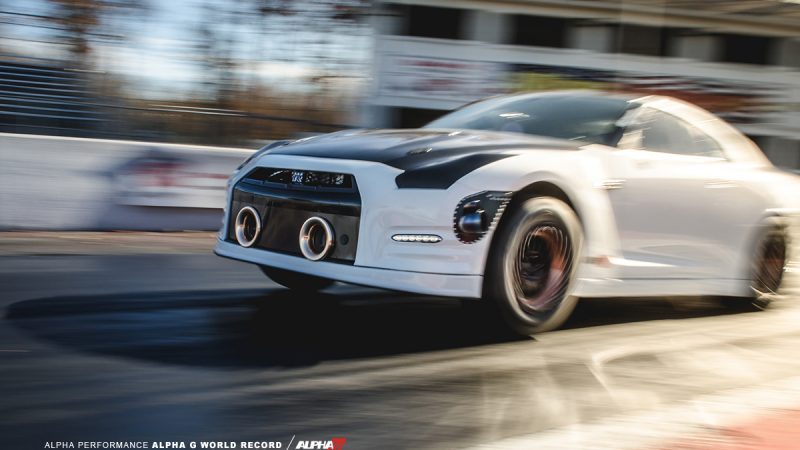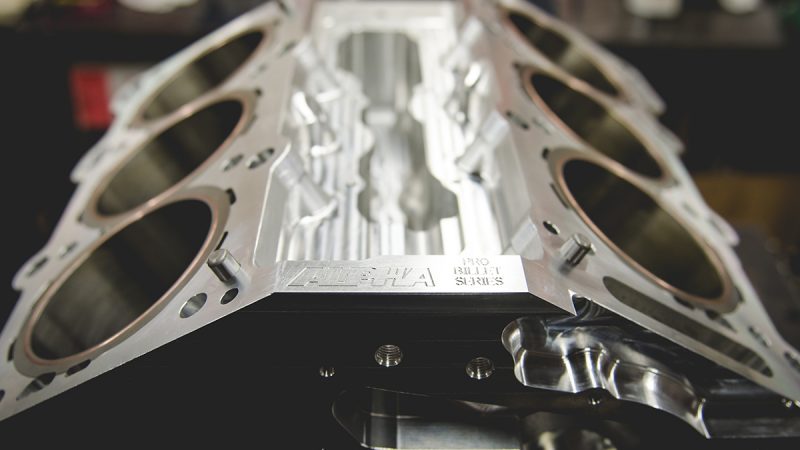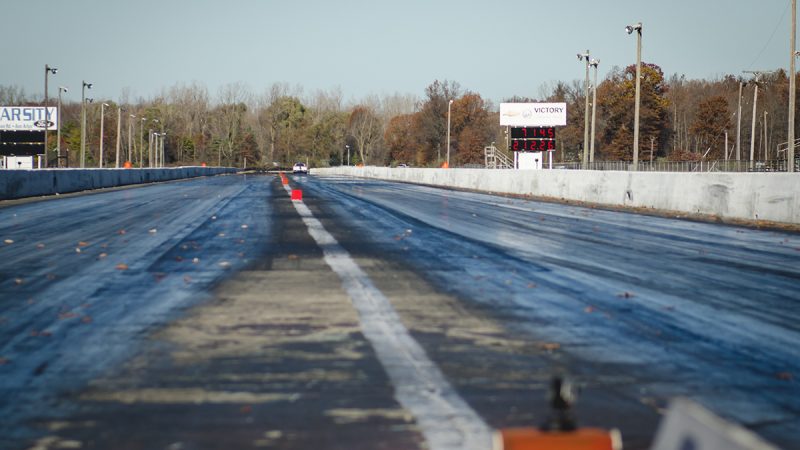Edmunds.com Track Battle: Our Project Mitsubishi Evo vs. Nissan GT-R
Mission Improbable
By Jason Kavanagh, Engineering Editor | Published Dec 21, 2009
“Beat the GT-R around Streets in the blue Evo. I still want to take my kids to bassoon practice with it, though. And you know how I hate getting my hands dirty. I’m an ‘arrive-and-drive’ kind of guy. Get it right or pack your stuff, Pal.”
With these words from Scott Oldham, IL‘s big enchilada, it was clear from the outset that Project Evo, our long-term 2008 Mitsubishi Evo GSR, wasn’t to be a one-string banjo. The boss wanted a fair fight.
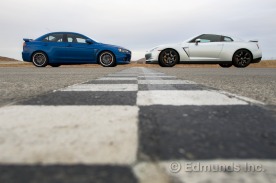
A fair fight? Not the words you’d expect to hear when it comes to challenging a 2010 Nissan GT-R, one of the most comprehensively fast cars extant.
Truly Dual-Purpose
Streets of Willow Springs is a road course in the high desert of Southern California. It’s got a mix of corners, cambers and speeds. It’s technical. Every weekend you’ll find guys there running in events and setting quick times with their modified street cars. Plus, it’s local, and we’ve got plenty laps of it under our belts. The perfect yardstick of speed with which to measure Project Evo against the GT-R.
Now, you’ve heard of making a dual-purpose street/track car before, but we would take the concept to a more rigorous extreme than your typical weekend-warrior track-day guy. (You’d be surprised how inspired you can become by the thought of being forced to stand in line for food stamps.)
Here’s what we mean. Anyone can gut an Evo, throw on slicks and an unrelentingly stiff suspension, run race gas and go hunting GT-Rs. The beauty of the 2010 Nissan GT-R and the 2008 Mitsubishi Evo, though, is their duality their ability to serve duty in the daily grind and then, in the blink of an eye, turn a smokin’ lap time or dispatch lumpy back roads at a pace few cars on the road at any price can match. Breadth of talent. It’s what makes a car special. Eroding this in the name of a quick lap time would be unwise on several levels.
As such, Project Evo would be modified within the same limitations as a box-stock GT-R. Street tires, pump gas and civility were mandatory, meaning Project Evo would retain a full interior and working creature comforts. Any weight reduction would be incidental in the substitution of stock parts with aftermarket ones. Can’t toss the A/C, backseats or anything else. Irreversible modifications to the body shell are also out.
Track-specific alignment and ride height adjustments were also forbidden, though we did allow for the tweaking of the Evo’s dampers during its track outing. Why? Because the GT-R has adjustable dampers but not adjustable ride height. Get the idea?
Both cars rolled up, went through a check of fluids, lug nuts and such and then went on the track.
What this means is that this is not your typical comparison of apples to steroid-infused mangoes. The 2008 Mitsubishi Evo would have its work cut out for it.
Power
Our long-term 2009 Nissan GT-R has run the Streets in 1:25.68. The last stock Evo GSR we ran there did it in 1:32.51. We’d have to find nearly 7 seconds in the Evo. (Maybe we’ll take a look at craigslist for jobs we can do at home, just in case we fail.)
There would be no hope of matching the 2010 Nissan GT-R in the speed of its Getrag-designed dual-clutch gearbox. It shifts really, really quickly. Even more quickly than veteran IL tester Josh Jacquot, if you can believe that. This built-in advantage for the GT-R would add up over the course of a lap. We would have to find time in the Evo elsewhere.
Matching the GT-R’s power-to-weight ratio would be a good start. In doing so, the Evo should be capable of matching the GT-R’s acceleration. But to get the same power-to-weight ratio as the GT-R, the 3,521-pound Evo would need about 430 horsepower. On ordinary premium pump gas, this is a lot to ask from the Evo’s little 2.0-liter inline-4, but on the 91 octane called “premium” gas here in California, it would be damned near impossible.
Never underestimate the power of smart people, good hardware and bull-headed perseverance.
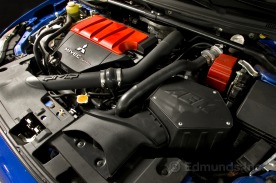 The most dramatic of the changes is the bolt-on Garrett GT30R turbo, which came alive once we installed the 3.0-inch AMS Widemouth downpipe. Supporting mods to maximize volumetric efficiency include Cosworth MX1 camshafts, an AEM intake and a variety of AMS parts like an upgraded intercooler and its associated plumbing, plus a new exhaust. High-flow fuel injectors from Injector Dynamics that are rated at 1,000cc/minute handle the fuel side of the equation, while a stronger ACT clutch and flywheel helped us turn this thermo-chemical ballet into motion rather than smoke.
The most dramatic of the changes is the bolt-on Garrett GT30R turbo, which came alive once we installed the 3.0-inch AMS Widemouth downpipe. Supporting mods to maximize volumetric efficiency include Cosworth MX1 camshafts, an AEM intake and a variety of AMS parts like an upgraded intercooler and its associated plumbing, plus a new exhaust. High-flow fuel injectors from Injector Dynamics that are rated at 1,000cc/minute handle the fuel side of the equation, while a stronger ACT clutch and flywheel helped us turn this thermo-chemical ballet into motion rather than smoke.
Project Evo ultimately produced 388 hp as measured at the hubs by a Dynapack dyno on said 91 octane, which is essentially an indication of 430 hp at the flywheel depending on which magical factor of theoretical power loss in the drivetrain you want to apply.
Obsessive tuning by Road Race Engineering was key to making such extreme power both safely and with repeatable effect. It’s all about knowing when to say when bigger power numbers were found during the final tuning process but deemed too unstable for the real world of inconsistent octane among different fuel brands and widely varying ambient conditions.
Grip
In the name of grip, it’s tough to beat wider tires and a suspension that can take advantage of them. The Evo’s stock Yokohama A13c tires boast some of the stickiest carcasses you can find on a production car. Still, there’s that width factor, and there’s room for more tire in the Evo’s wheelwells. (Plus there’s that looming pink slip.)
Remember no changes to the body shell. So this precludes rolling of the fender lips to stuff in mega-width tires. Still, we were able to fit 265/35R18 Bridgestone RE-11 tires, summer tires that are 20mm wider than the stock ones. These meats, sourced from Tire Rack, were matched with 18-by-9.5-inch forged-aluminum Volk Racing RE30 wheels, each an inch wider and 4 pounds lighter than the cast-aluminum Enkeis that come stock on the 2008 Mitsubishi Evo GSR.
Grippier rubber can make a car handle strangely if it results in the suspension exploring unanticipated regions of its camber curve. This camber loss due to body roll is of particular concern on nose-heavy cars with MacPherson-strut front suspensions like the Evo.
 The solution, additional roll stiffness, was found in a set of AST coil-over suspension pieces by Vorshlag. These units comprised a complete bolt-on solution, including camber plates (which our self-imposed rules dictated must remain in a single setting for street and track), coil springs and double-adjustable dampers.
The solution, additional roll stiffness, was found in a set of AST coil-over suspension pieces by Vorshlag. These units comprised a complete bolt-on solution, including camber plates (which our self-imposed rules dictated must remain in a single setting for street and track), coil springs and double-adjustable dampers.
Braking improvements were had from Stoptech front pads and braided-steel brake lines with Project Mu brake pads in the rear.
Test Track
With this stage of tune, Project Evo put up these numbers at our usual test track:
- Braking from 60 mph: 111 feet
- Skid pad: 0.99g
- Slalom: 71.3 mph
- 0-60 mph: 4.4 seconds (4.0 seconds with 1 foot of rollout)
- Quarter-mile: 12.4 seconds at 113.4 mph
There’s an asterisk on those acceleration runs the factory launch rev limiter precluded an optimal launch with Project Evo’s newfound rev-intensive power delivery to the detriment of its ET and 0-60 time. Trap speed, however, is relatively insensitive to how well a car is launched.
As per our usual protocol, we also tested the 2010 Nissan GT-R at the same venue.
- Braking from 60 mph: 113 feet
- Skid pad: 0.94g
- Slalom: 72.7 mph
- 0-60 mph: 3.8 seconds (3.5 seconds with 1 foot of rollout)
- Quarter-mile: 11.7 seconds at 119.6 mph
You’ll note that it didn’t duplicate the handling and braking numbers we’ve recorded for GT-Rs tested in the past. We wanted the car’s tires to be optimal for our test at the Streets of Willow, so this later round of testing was conducted with worn tires. All the ponies appear to be in the stable, however, as its trap speed was among the highest we’ve recorded for any GT-R.
Based on these results, you’d think that things were not looking good for the Evo’s chances against the GT-R at Streets (or the likelihood of continuing to see a certain name on the IL masthead).
Streets of Willow
Enough foreplay; you want to know what happened at Streets of Willow. Fair enough.
Both cars rolled up to the starting line, went through our usual pre-test check of full fluids and tight lug nuts and such and then went out on the track. Beyond tire pressure, we made no deviation from the setup we’d run on the street for so many months. Same alignment, engine tune, ride height, damper settings, you name it. Hell, the GSR still had the jack and spare tire in its trunk.
The Evo went first. After a couple of warm-up laps, Senior Road Test Editor Josh Jacquot, our test driver for the day, ran his first lap in anger, a 1.26.56. Over the radio he relayed a quick impression: “I didn’t expect it to be that fast already. There’s more time in it.”
He whittled the time down to a 1.25.31 a few laps later. Came the report: “This thing is awesome. [Expletive] awesome.”
Then it was the GT-R’s turn. Right away, the GT-R put down a 1.25.22. But what’s this? Each successive lap was slower and slower. Jacquot finally threw in the towel as the GT-R was now simply punishing its tires, not getting faster. The GT-R’s first hot lap was to be its best time.
Less than a tenth of a second is all that separates the quickest lap times of the two. It’s a victory for the GT-R, albeit a slim one. (A sickening feeling settled in the pit of the stomach of this lowly scribe as we pondered the relative merits of newspaper and cardboard as weather insulation.)
The Data
Let’s take a look at where each car was fast. Not surprisingly, the 2010 Nissan GT-R enjoys a substantial advantage in acceleration, reaching 109 mph at the end of the main straight at the Streets compared to 104 mph for the Evo.
Peak speeds before the braking zones for Turns 3 and 4 likewise show a 5-mph difference between the two cars, again in the Nissan’s favor. At this point the GT-R had carved out nearly a 0.6-second advantage as it made its way around the full 1.8-mile circuit at the Streets.
But from this point on, the Evo ceded no more ground to the GT-R. In the approach to the bowl, a right-hander with a 20-degree banking, the Evo clawed back 0.2 second.
Then the Evo carried more speed in the approach to and through the “kink,” a tricky transition over a blind crest at the end of the back straight, erasing another 0.15 second off the GT-R’s lead. Finally almost another tenth-and-a-half was found by the Evo in the portion of the track leading into the skid pad and then the long right-hander that spits you out onto the main straight and across the start/finish stripe.
Magic in the Machine
Reflecting on some of the numbers we measured at the test track, a finish this close came as something of a surprise. In all honesty, we expected the GT-R to swat the Evo away more handily at Streets. So where did the Evo overcome its apparent deficiencies?
It’s down to balance. On the track, the Evo’s handling was far more adjustable than the GT-R’s, and this neutrality allows the driver to pick up the throttle sooner. Crucially, the Evo’s engine doesn’t fall off boost noticeably when you’re modulating the handling balance with the throttle. Like the GT-R, there’s no waiting for the boost to arrive. It’s right there, all the time. The result is the kind of mechanical reflexes that let you place the Evo wherever you want, whenever you want it there.
Top it off with superior grip and you can see the result in apex speeds that were consistently higher in the tricky technical segments of the track than those of the GT-R. From Jacquot’s notebook: “Awesome balance, with explosive corner exit. It’s involving, fun and confident with the right driver. The chassis can easily cope with more tire. Its major limiting factor is grip, not control.”
Whereas our Evo demands a driver willing to coax a lot of slip angle at both ends of the car for the quickest result, the GT-R rewards a more conservative driving style and is ultimately easier to drive fast. And it is a phenomenally rapid thing. Again from the test driver’s notebook: “It’s benign compared to the Evo. The GT-R is fast but frustrating in many places. It understeers where the Evo rotates, bogs where the Evo explodes. Yet it still has enough power and grip to rip off a lap 0.1-second quicker than Project Evo.”
One-tenth of a second. This could have stretched into multiple seconds were the 2010 Nissan GT-R armed with the kind of malleable chassis dynamics of Project Evo.
Grade-School Math: The Solution to Job Security
Once the daylight faded to where the video staff finally admitted defeat, a strange thing happened in the paddock. Or more accurately, didn’t happen. There was no swapping of brakes pads or tires. No realigning of the car. Nothing to do except simply climb in, turn the key and drive home. The boss might be on to something with his persnickety track habits.
Nine out of 10 track junkies agree more is better when it comes to track time. Despite running half as many laps, the GT-R’s front tires became heavily blistered on the shoulders while the Evo’s RE-11s looked ready for a few dozen more hot laps. The boss will want to do more than one fast lap. He’ll like that.
But wait, what’s this? In tallying up the lap totals in the rough draft of my resignation letter, the path to ongoing gainful employment illuminates averaging the five quickest lap times of each car gives the Evo the edge over the GT-R.
Turns out that old saw of consistency counting has a lot of truth in it, else you’d have seen a different byline on this story.
The manufacturers provided Edmunds these vehicles for the purposes of evaluation.

